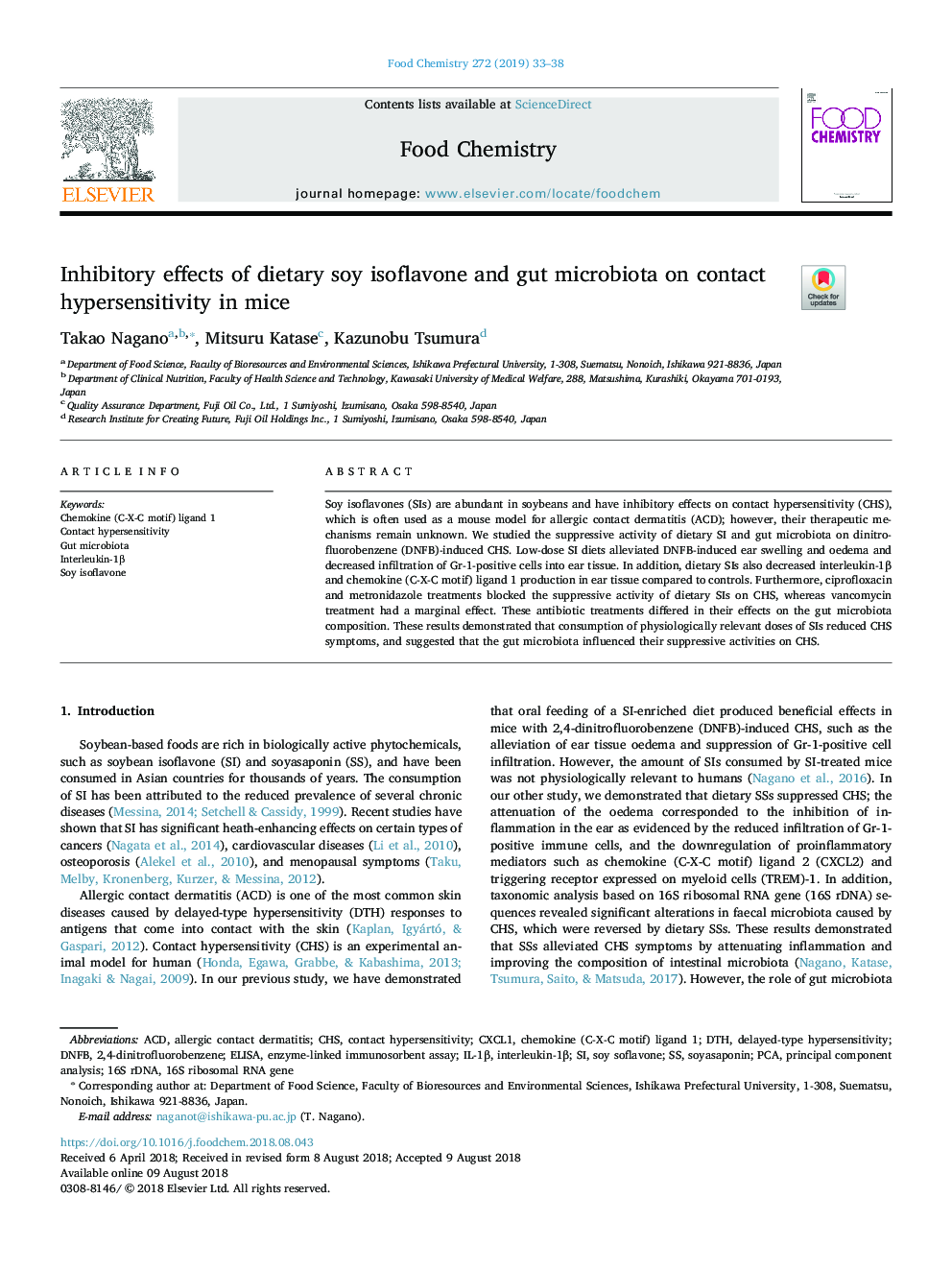| Article ID | Journal | Published Year | Pages | File Type |
|---|---|---|---|---|
| 7583804 | Food Chemistry | 2019 | 6 Pages |
Abstract
Soy isoflavones (SIs) are abundant in soybeans and have inhibitory effects on contact hypersensitivity (CHS), which is often used as a mouse model for allergic contact dermatitis (ACD); however, their therapeutic mechanisms remain unknown. We studied the suppressive activity of dietary SI and gut microbiota on dinitrofluorobenzene (DNFB)-induced CHS. Low-dose SI diets alleviated DNFB-induced ear swelling and oedema and decreased infiltration of Gr-1-positive cells into ear tissue. In addition, dietary SIs also decreased interleukin-1β and chemokine (C-X-C motif) ligand 1 production in ear tissue compared to controls. Furthermore, ciprofloxacin and metronidazole treatments blocked the suppressive activity of dietary SIs on CHS, whereas vancomycin treatment had a marginal effect. These antibiotic treatments differed in their effects on the gut microbiota composition. These results demonstrated that consumption of physiologically relevant doses of SIs reduced CHS symptoms, and suggested that the gut microbiota influenced their suppressive activities on CHS.
Keywords
SoyasaponinDNFBCHS16S rDNAIL-1βACDCXCL1DTH2,4-dinitrofluorobenzenePCASoy isoflavoneInterleukin-1βdelayed-type hypersensitivityPrincipal component analysisEnzyme-linked immunosorbent assayELISAContact hypersensitivityAllergic contact dermatitisGut microbiota16S ribosomal RNA genechemokine (C-X-C motif) ligand 1
Related Topics
Physical Sciences and Engineering
Chemistry
Analytical Chemistry
Authors
Takao Nagano, Mitsuru Katase, Kazunobu Tsumura,
